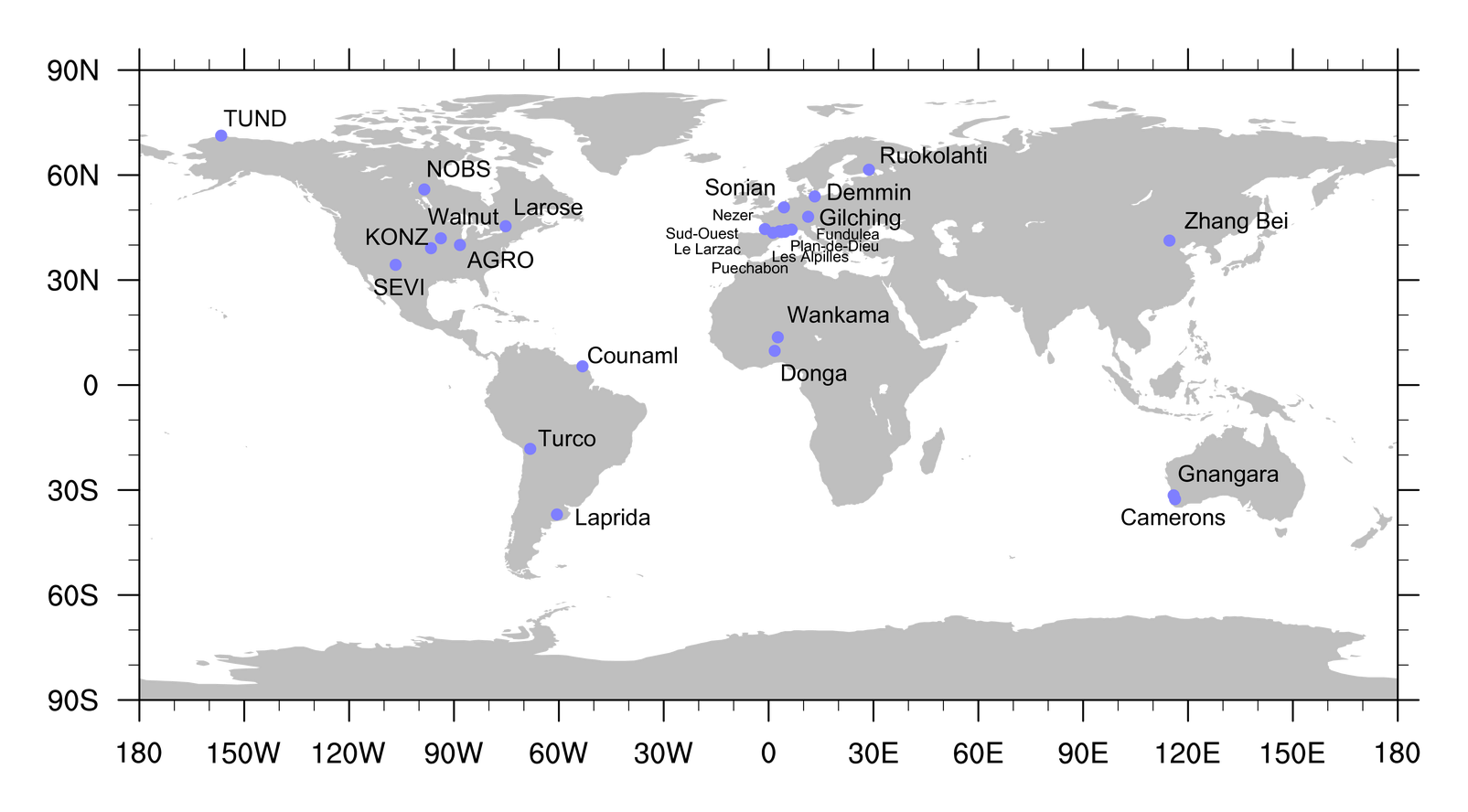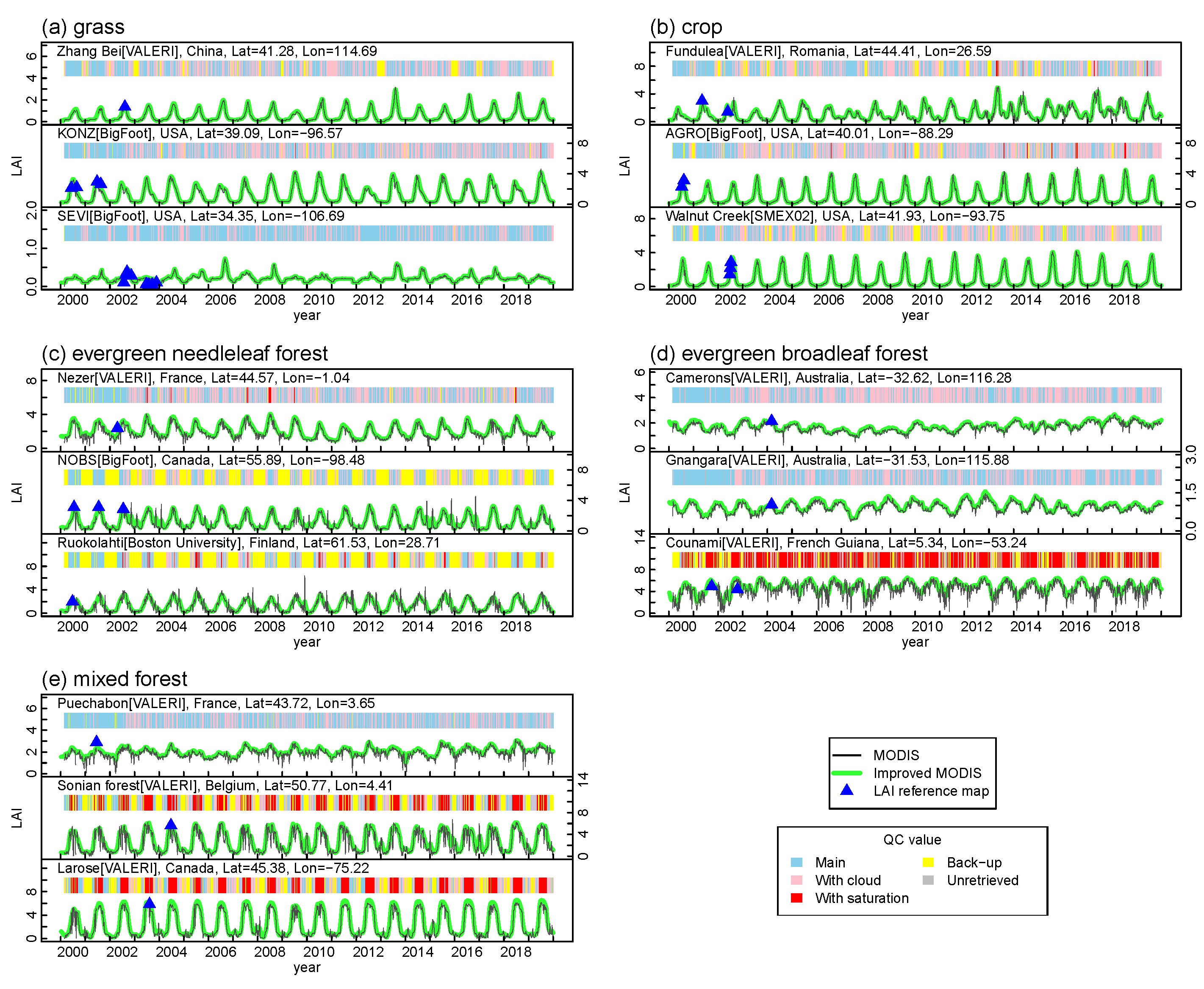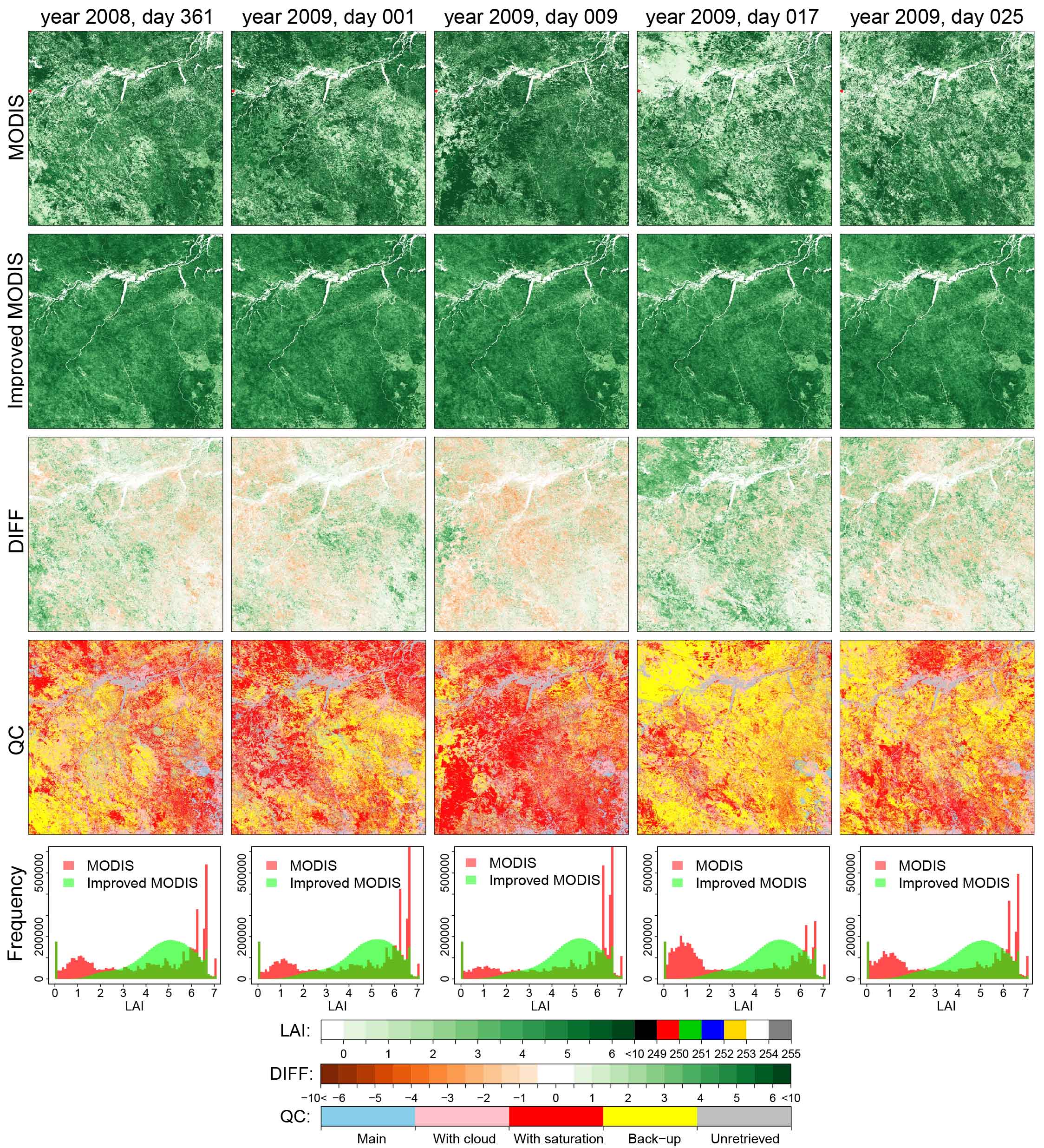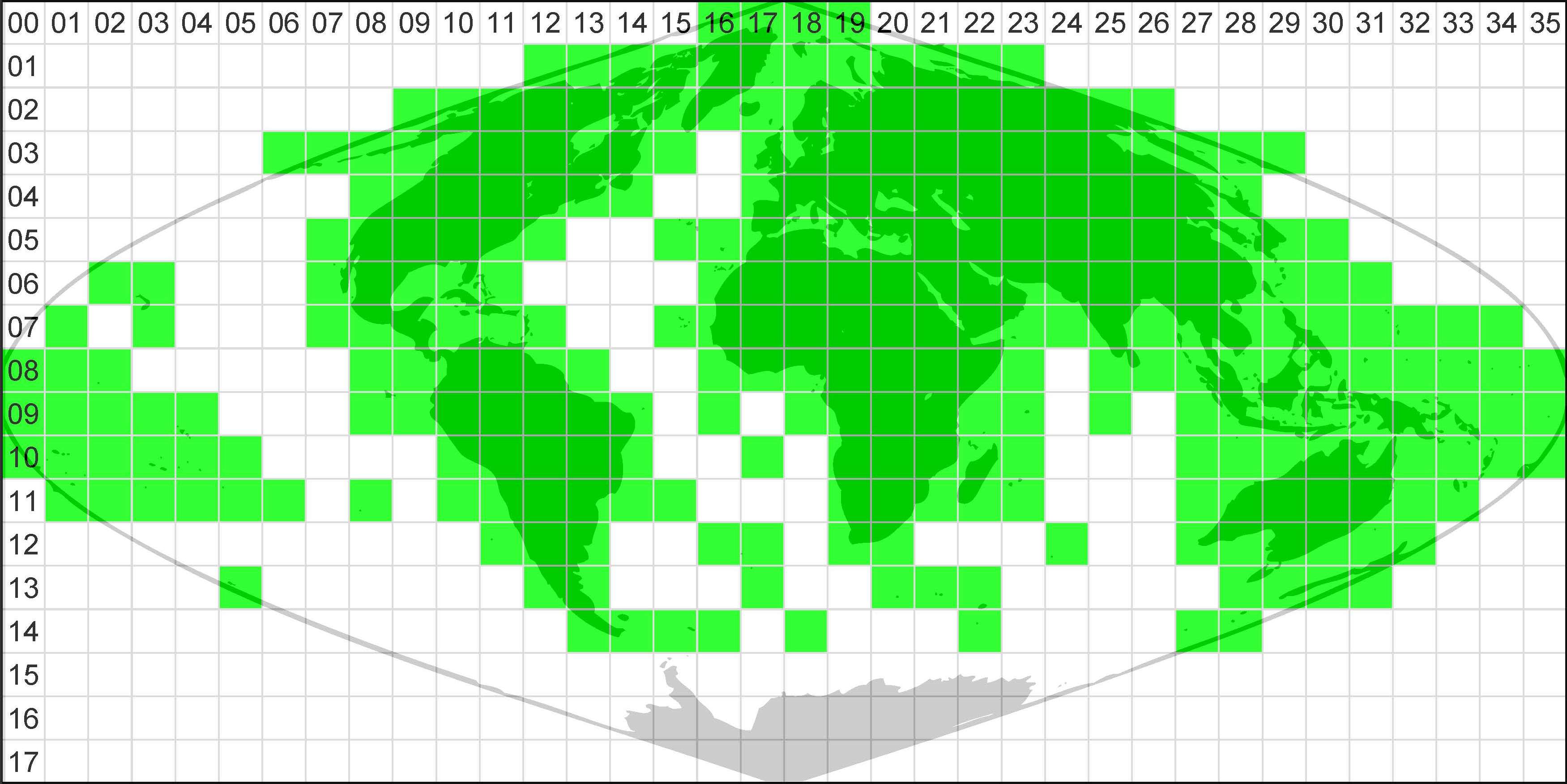Reprocessed MODIS Version 6 Leaf Area Index data sets for land surface and climate modellingIntroduction | Validation results | Data characteristics | Data download | Data usage | Data citation | Acknowledgement | Help
[4/6/2023 UPDATE]: The newly reprocessed MODIS Version 6.1 LAI data please visite http://globalchange.bnu.edu.cn/research/laiv061, the reprocessed Version 6 data will not be updated anymore.
The LAI data sets were generated by reprocessing the MODIS version 6 LAI products. The raw data used include the MODIS LAI Version 6 products MCD15A2H (2002.7.4-2020) (Myneni et al., 2015), MOD15A2H (2000.2.18-2002.6.26) (Myneni et al., 2015) and MODIS Land Cover Type product MCD12Q1 (2001-2018) (Friedl and Sulla-Menashe, 2019). The algorithm is mainly based on the two-step integrated method developed by Yuan et al. (2011). The updates are mainly related to the background value calculations:
We employed the same validation and comparison strategy as done for version 5 (Yuan et al., 2011, http://globalchange.bnu.edu.cn/research/lai). The results show continuous improvements of both original MODIS LAI Version 6 and the reprocessed data as compared with the previous version (see Validation results). The original MODIS LAI data still show distinct discontinuous values, in terms of time series and spatiotemporal comparison. The reprocessed data perform much better than the original products. We strongly recommend using the reprocessed LAI data sets for land surface and climate modeling purposes. Any feedbacks are welcome. Validation results For direct validation comparison, a total of 44 LAI reference maps which contain true LAI values were collected over a subset of 26 sites (Fig. 1) from VALERI, BigFoot (Cohen et al., 2006), Boston University (Yang et al., 2006) and SMEX02 (Anderson et al., 2004). The scatter plot is shown in Fig. 2.  Fig. 1: The location of validation sites.
 Fig. 2: Scatter plot of direct validation. "M" and "SD" represent the mean and the standard deviation of the difference between the LAI values displayed in the y axis and x axis. The solid line in each plot is the linear fitted line. For the temporal comparison, we selected three sites from each land cover type. The time-series plot is shown in Fig. 3. The available LAI reference map values were marked in the plot. At the same time, the QC information, which represents the dominant retrieval algorithm, is drawn in a histogram style using different colors.  Fig. 3: Time-series plot of LAI values. The QC values, which indicate the retrieved algorithm, are drawn a histogram style in different colors. For spatiotemporal comparison, a representative tile (h12v09) is selected as shown below (Fig. 4).  Fig. 4: Spatiotemporal comparison of tile h12v09 (1200km x1200km). The spatial domain boundary points' longitudes and latitudes are: upper left (60.01W, 00.00N), upper right (49.80W, 00.00S), lower left (60.93W, 10.00S), lower right (50.57W, 10.00S). The frames of the first row represent MODIS LAI values of the five 8-day composites which are labeled at the top of figure. The second row is improved MODIS LAI value. The "DIFF" row represents the differences (Improved MODIS-MODIS). The "QC" row refers to the MODIS LAI quality control information. The last row is the statistic of frequency of LAI values within this tile. Data characteristics
Data download 1. 500 meters, 8-day, HDF-EOS format
2. 15 seconds, 8-day, NetCDF-4 format
3. 0.05 degree, NetCDF-4 format
4. 0.1 degree, NetCDF-4 format
5. 0.5 degree, NetCDF-4 format
Data usage For HDF-EOS format (the same with MODIS LAI products), you can access it via HDF-EOS libraries or tools. Many examples can be found on HDF-EOS Tools and Information Center. The netCDF format data sets in Geographic Coordinates are re-projected from HDF-EOS Sinusoidal projection data sets using the nearest sampling method. There are many freely available softwares for manipulating or displaying NetCDF Data. Data citation
Acknowledgement The orginal MODIS LAI and Land Cover Type products were made available from https://lpdaac.usgs.gov, maintained by the NASA EOSDIS Land Processes Distributed Active Archive Center (LP DAAC). We want to thank Per Jönsson and Lars Eklundh for providing software TIMESAT on the web site. We also want to thank VALERI project, BigFoot science team and CEOS LPV group for providing LAI reference maps on their web sites. Help If you have any questions when using LAI data sets, please email yuanh25@mail.sysu.edu.cn. |
 |
